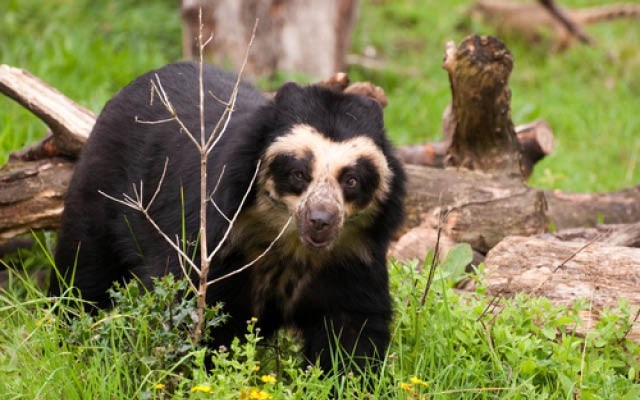The spectacled bear is a mysterious creature named after the light coloured rings around its eyes.
Tremarctos Ornatusse is the only bear species native to South America and inhabits high elevation cloud forests of Venezuela, Colombia, Ecuador and the Andean ranges of Peru. Its long claws give it an ability to scale rock faces similar to the Chief's Grand Wall in Squamish, and it uses a high pitched shrill to communicate.
After studying black bears on Whistler and Blackcomb mountains between 2005 and 2007 as part of her master's degree, Robyn Appleton learned of the spectacled bear at a wildlife conference and wanted to expand her research beyond black and grizzly bears found in North America.
"It was a foundation and a base for everything that I've done," said Appleton of research she undertook with local bear experts Michael Allen and Sylvia Dolson.
"It gave me the experience, it got me excited about bears and it was really going down to the conferences to present the data from Whistler (when I realized) that there was this huge gap and a need to study other bear species."
After a two-month exploratory trip to Peru to learn more about the spectacled bear, Appleton decided to make the endangered animal the topic of her PhD studies at UBC. In 2006 she connected with ex-hunter and now conservationist Javier Vallejos and began searching for the bear in northern Peru. Tenacity and patience paid off for the team after eight months in the field when they took their first photos of a spectacled bear from just three metres away. Appleton has since spent up to 300 days a year in the Peruvian wilderness tracking and observing the elusive bears. Documenting the project through film, photo and scientific research, Appleton now travels and presents her findings to audiences for education, awareness and fundraising purposes for the Spectacled Bear Conservation Peru, a non-profit organization that she founded in 2011. She presented "Climbing with Bears in Peru" on Saturday, Nov. 29 at Millennium Place alongside Great Bear Rainforest activist Norm Hann.
The spectacled bear is under threat from human encroachments such as agriculture, mining and road development, all of which are leaving the habitats fragmented and sometimes contaminated. While Appleton is a biologist, the more time she spent in Peru, the more her work turned towards political activism. The poorer communities in Peru — some near spectacled bear habitat — are exploited by the infamous "land mafia," whose members expropriate property through corrupt land deals. When Appleton rallied the villagers to stand up for their rights to the land around them, she became victim of an extensive smear campaign by the well-connected land mafia.
"I think the hardest thing is working in an environment that's so corrupt," said Appleton.
"It's like a virus or a cancer, it's always there and it never goes away. You have to find a way to adapt and live with it. You want to join the club, but if you join the club you're really just like a mafia yourself."
The "club" she refers to includes the government, court systems and people in power in Peru who are swayed by bribes or coercion.
"That's the game, that's how it's played. It's really who puts the money out there, the only way to battle that is to get more power. I spent a lot of my time networking, meeting ministers of the environment trying to find good, high-powered government people who would support us.
"We already have enough challenges just with the field site and trying to figure out how to work with these bears and study them, let alone having people trying to blow up our conservation centre, put drugs in my bag, send pieces of bears to our conservation centre or (threaten me with) death threats."
Despite the political and cultural challenges, Appleton is optimistic about the future of the spectacled bear. No population count has been recorded but she estimates there are approximately 1,000 bears left in their native South America. With funding for more full-time staff on the ground in Peru and cooperation with communities and government, she hopes to save the species from extinction. As much as Appleton is looking for support for her cause in Peru, she would like to see more public action to help protect B.C.'s Great Bear Rainforest.
"Here in Canada we have this opportunity to protect our coastline and we're not doing as much as we should," said Appleton.
"Canadians really love to focus on small, local projects — what's in our backyard. But we need to look at what is (happening) in someone else's backyard because they don't have the money to do it. I would really like to see more Canadians getting involved with volunteer programs and helping out. Whether they go out and help Norm or any other project, I would like to see people care a little bit more about what's going on, other than just what bike trail they're going to ride."
For more information on Spectacled Bear Conservation Peru go to the website at http://sbc-peru.org.




